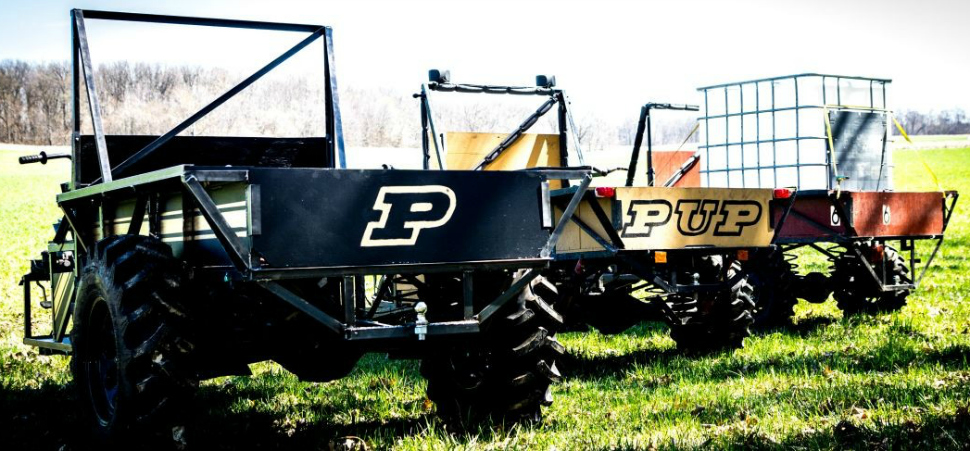Matthew Wood, June 18, 2017
For years, Purdue?s PUP has been treading where most other vehicles wouldn?t dare to go.
Now, the three-wheeled off-road conveyance — formally named the Purdue Utility Platform — has a new task: Fighting fires in Africa.
The project came about when a group called the Africa Fire Mission contacted Purdue and Agricultural and Biological Engineering professor John Lumkes about using the vehicles.
The PUP?s ability to go off road while carrying large loads and supplying power was the perfect solution to combating even small brush fires in countries like Cameroon and Kenya, where locals didn?t have the means or the ability to put them out.
?They told us they had trouble getting down narrow streets in cities like Nairobi, as well as a lot of rural areas,? Lumkes said. ?They saw a real opportunity for a low-cost vehicle. You can imagine trying to get a pretty expensive piece of fire equipment, it can be pretty tough. This really filled a need.?
The PUP vehicles have been roaming the countryside for nearly a decade, working as transportation for food, water and supplies, as well as serving as agricultural tilling and planting aides. The vehicle even works as a maize grinder and electrical generator. But this is its maiden voyage as a fire vehicle.
The task to make the conversion fell on former Purdue student Mark Rackish, who took it on as his senior design project last year. In a helpful coincidence, Rackish had experience as a volunteer firefighter while working on a different project, so he felt right at home.
?It was really great timing, really uncanny that my interests came together like this,? he says. ?I inherited a pretty well-started project. We had to finish up the vehicle, make it driveable and make it driveable with all of the fire equipment.?
The PUP vehicle is built as different modules, making it easy to adjust to different needs. The firefighting portion of the PUP can even be extracted and put on something like a pickup truck.
?They are designed to certain specs that can be tweaked if need be,? Rackish says. ?We applied those same concepts to our module.?
That?s part of the lure of sending it to Africa. The goal is to be able to make the entire vehicle out of locally sourced material, meaning anyone can make it anywhere with minimal supplies.
Once Rackish was done turning the PUP into a lean, mean fire-fighting machine, he took the ultimate final exam — putting out a fire under the supervision of the Purdue Fire Department.
The team put together a simulated structure out of wooden pallets and let it burn.
?They were skeptical whether 200 gallons of water (what the PUP?s tank can hold) could put out such a considerable fire load,? Rackish says, ?but it ended up working really well.?
Now the first firefighting vehicle is on its way to Kenya, where the team hopes it can make a difference in keeping an entire continent a bit safer from burning blazes. Then the goal is to give the locals the keys to the PUP and let them tackle the fires themselves.
?We don?t really want companies to make money off of this,? Rackish says. ?It?s essentially a do-it-yourself project. If people want to see our plans, we?re happy to show them how to make these.?
They?ve also incorporated the mind power of students from African universities in order to bring about the best possible devices.
?From our students? standpoint it?s a win-win because they learn so much about cultural relationships,? Lumkes says. ?We?re gaining a lot of knowledge in return.?







